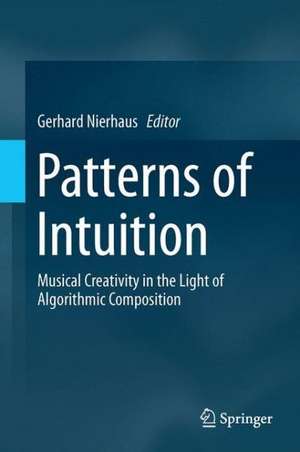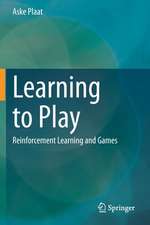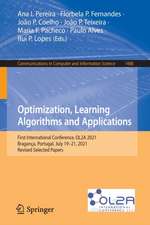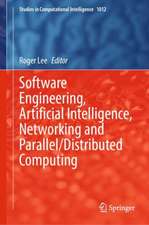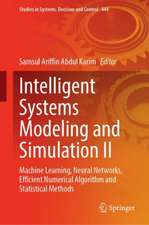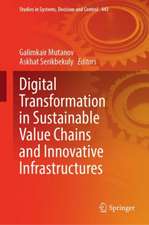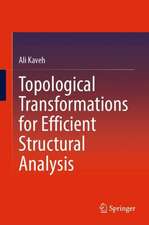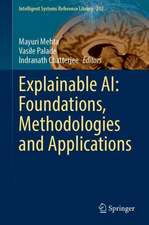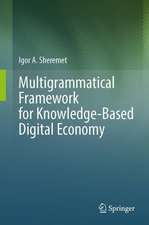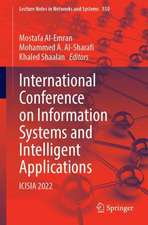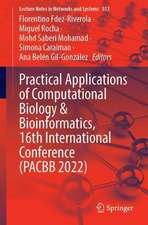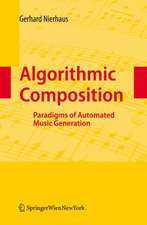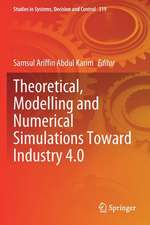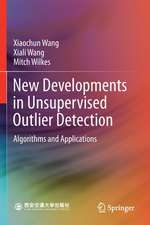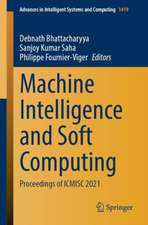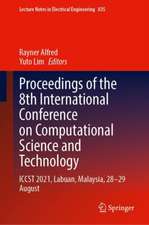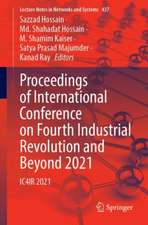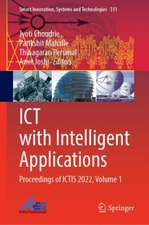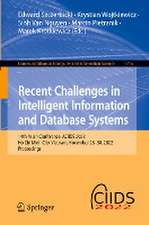Patterns of Intuition: Musical Creativity in the Light of Algorithmic Composition
Editat de Gerhard Nierhausen Limba Engleză Hardback – 22 ian 2015
| Toate formatele și edițiile | Preț | Express |
|---|---|---|
| Paperback (1) | 760.43 lei 6-8 săpt. | |
| SPRINGER NETHERLANDS – 6 oct 2016 | 760.43 lei 6-8 săpt. | |
| Hardback (1) | 772.36 lei 6-8 săpt. | |
| SPRINGER NETHERLANDS – 22 ian 2015 | 772.36 lei 6-8 săpt. |
Preț: 772.36 lei
Preț vechi: 965.44 lei
-20% Nou
Puncte Express: 1159
Preț estimativ în valută:
147.79€ • 154.30$ • 122.32£
147.79€ • 154.30$ • 122.32£
Carte tipărită la comandă
Livrare economică 05-19 aprilie
Preluare comenzi: 021 569.72.76
Specificații
ISBN-13: 9789401795609
ISBN-10: 9401795606
Pagini: 421
Ilustrații: VIII, 421 p. 197 illus.
Dimensiuni: 155 x 235 x 30 mm
Greutate: 0.78 kg
Ediția:2015
Editura: SPRINGER NETHERLANDS
Colecția Springer
Locul publicării:Dordrecht, Netherlands
ISBN-10: 9401795606
Pagini: 421
Ilustrații: VIII, 421 p. 197 illus.
Dimensiuni: 155 x 235 x 30 mm
Greutate: 0.78 kg
Ediția:2015
Editura: SPRINGER NETHERLANDS
Colecția Springer
Locul publicării:Dordrecht, Netherlands
Public țintă
ResearchCuprins
Outline of the compositional structure(s) to be investigated.- The algorithms/procedures used.- Findings.- Improvisation in Trees.- Electronic Music for an Acoustic Piano.- Forbidden Melodies.- The Semantics of a String Quartet.- Comments from renowned scientists from related research areas of Algorithmic Composition, Musicology, Artistic Research, Creativity.
Recenzii
“This is a useful read about composers‘collaborating’ with computational techniques in their musical work. … there ismuch of interest to be discovered in this fascinating collection of casestudies. … The contribution of this book is to explore (in detail) howdifferent composers and computers might fruitfully collaborate and enhance eachother’s creative capabilities, from a range of perspectives.” (Anna Jordanous, ComputingReviews, December, 2015)
Textul de pe ultima copertă
The present book is the result of a three year research project which investigated the creative act of composing by means of algorithmic composition. Central to the investigation are the compositional strategies of 12 composers, which were documented through a dialogic and cyclic process of modelling and evaluating musical materials. The aesthetic premises and compositional approaches configure a rich spectrum of diverse positions, which is reflected also in the kinds of approaches and methods used. These approaches and methods include the generation and evaluation of chord sequences using genetic algorithms, the application of morphing strategies to research harmonic transformations, an automatic classification of personal preferences via machine learning, and an application of mathematical music theory to the analysis and resynthesis of musical material. The second part of the book features contributions by Sandeep Bhagwati, William Brooks, David Cope, Darla Crispin, Nicolas Donin, and Guerino Mazzola. These authors variously consider the project from different perspectives, offer independent approaches, or provide more general reflections from their respective research fields.
Caracteristici
Provides new insights into musical intuition and its possible formalization Demonstrates which algorithms and paradigms of algorithmic composition are suitable for applications in contemporary composition Examples of current mathematical approaches to the compositional process are demonstrated Includes supplementary material: sn.pub/extras
